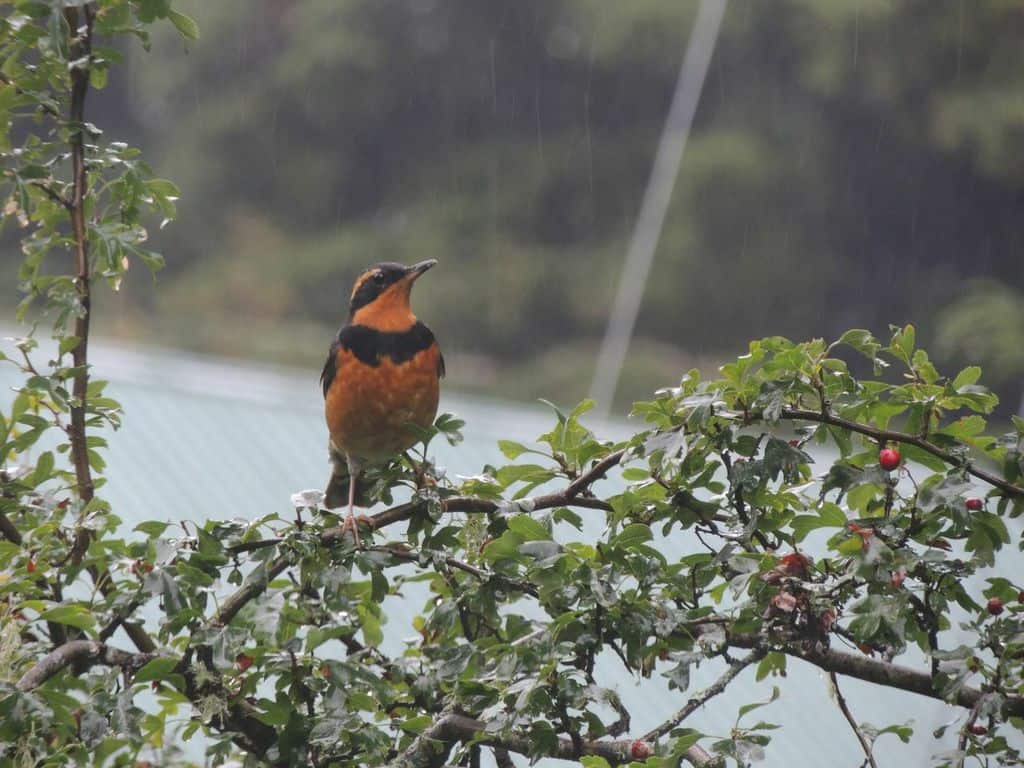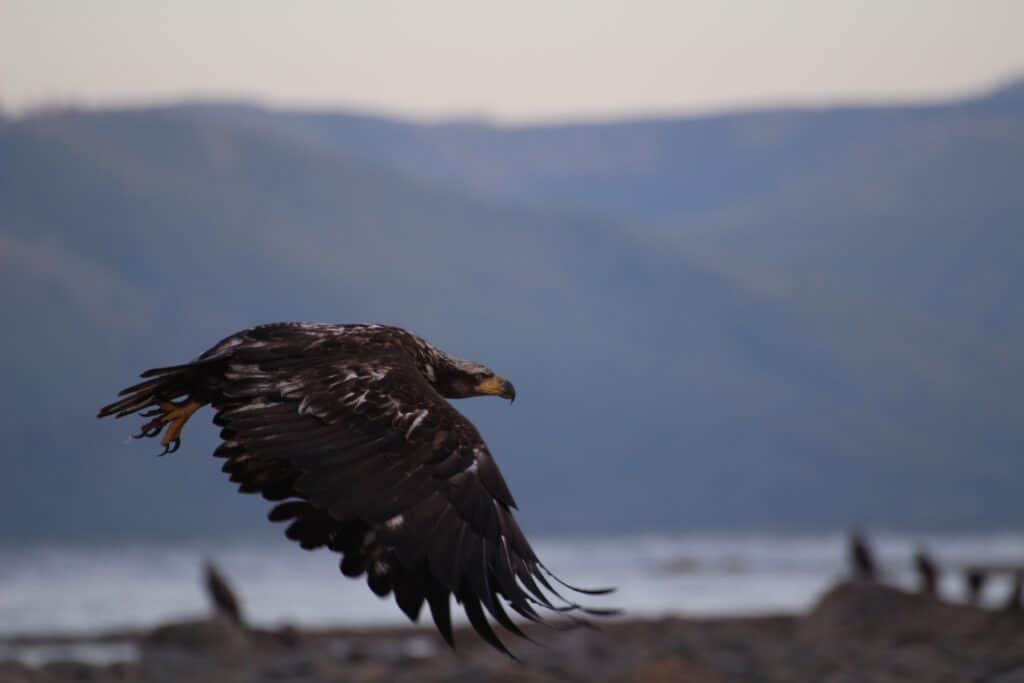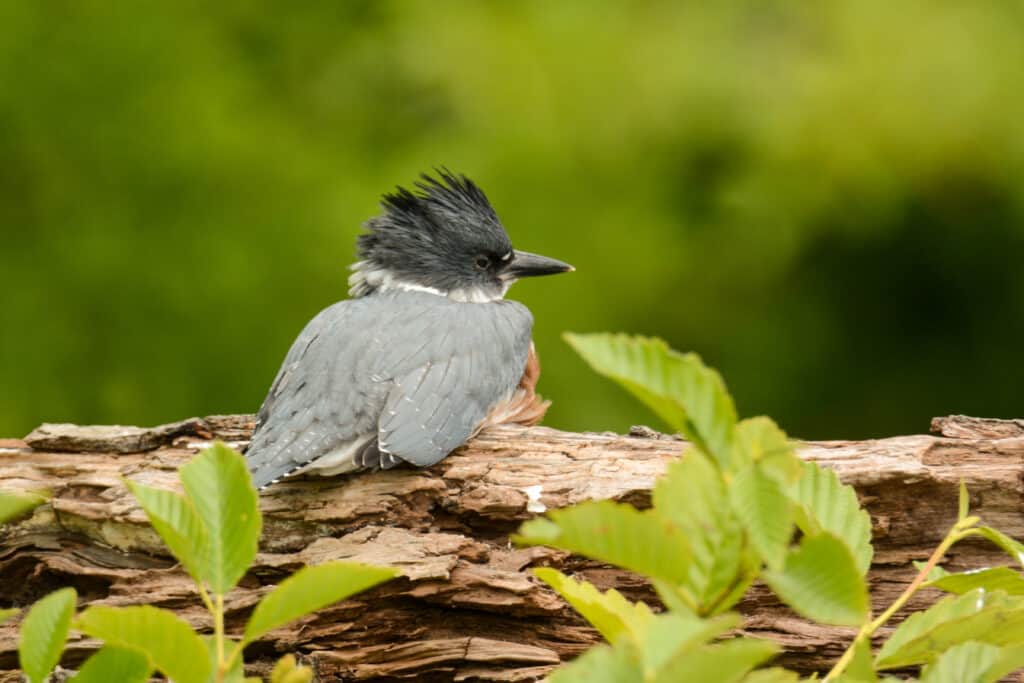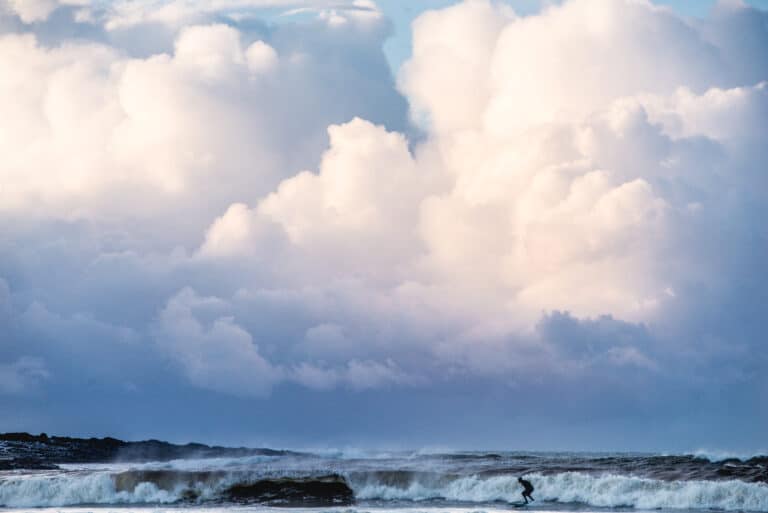22 September 2022
Tiny western sandpipers skitter along the seaweed, when suddenly a black oystercatcher sounds the alarm from down the beach – a peregrine falcon! The predator rises from behind the dunes like a masked avenger and dives into the flock of sandpipers. The shorebirds take flight in tight formation; a defensive attempt to resemble one big bird. The falcon doesn’t manage a meal this time, but will inevitably be back in hopes of catching a straggler. Though flustered, the sandpipers are still hungry and continue feeding, scuttling back and forth with the waves.
The alarm ringers – black oystercatchers, are odd-looking creatures. Black with long red bills and pink legs. They nest on some of the islets on Haida Gwaii and usually hatch just one or two young. They migrate along the coast and arrive on the stony beaches in early spring where they can find refuge to build nests and rear their young.


Next, a flock of semipalmated plovers land. It’s the first sign that they’ve finished nesting, as both males and females share chick-tending duties. Semipalmated plovers arrive on Haida Gwaii around mid-April or early May. They look similar to killdeer which have two black neck-bands and spend all year on island. On the contrary, semis have only one neck-band, are smaller and nest along the shore where they lay four small eggs in a cup lined with small stones and broken shells.
Young chicks are occasionally seen running along the beach in July, their tiny black legs holding up what look like mobile balls of fluff. These fledglings grow quickly and are ready for the southbound migration by late August.
All shorebirds are precocial and can run and feed themselves shortly after birth, unlike songbird chicks that remain helpless in the nest for up to three weeks.
While the shorebirds are matching and hatching near water, the songbirds are busy in the trees that line the beach. Thrushes, sparrows, warblers and wrens are either feeding young or are being fed by their partner while brooding their clutch of eggs. Their songs can be heard throughout the nesting season, though they carry best on cloudy days when the water particles in the air help diffuse sound.
The ‘swamp sparrow’ or varied thrush, is a handsome orange and black robin-sized bird. Their call resembles a ringtone and has people rushing inside to answer their phone when they hear the long ‘meeeeep’. Other birds hear this tune and are compelled to sing along.
When studying birds in our forests, it can be hard to pin down exactly where the varied thrush is singing from.
“It almost seems to be a ventriloquist,” said a local researcher. “Their songs seem to come from everywhere.”
Some visiting musicians also had difficulty following this bird’s vocalizations – “it’s so random,” they said. “There doesn’t seem to be any pattern to it and it’s all one pitch.”
To experience the whole choir, we recommend heading out at a brisk 3:00am on a cloudy midsummer morning. If you’re lucky, you’ll hear the inaugural high note of a varied thrush, soon followed by a low note as fellow vocalists chime in. Next an even higher note than the first, and another complimentary one just a little lower. As the feathered singers come together, the forest seems to swell with sound – a lovely start to a summer morning on Haida Gwaii.

Read more about Haida Gwaii
-

Cape Fife in a Day
Tiny western sandpipers skitter along the seaweed, when suddenly a black oystercatcher sounds the alarm from down the beach –…
-

Dancing with the winds
Tiny western sandpipers skitter along the seaweed, when suddenly a black oystercatcher sounds the alarm from down the beach –…
-

An Awakening Hike
Tiny western sandpipers skitter along the seaweed, when suddenly a black oystercatcher sounds the alarm from down the beach –…

